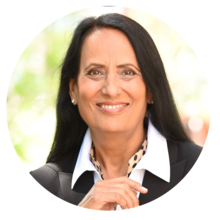About this Presentation
The presentation tries to answer the simple question: Should there be any difference between the way TOC solutions are being taught and the sequence they are being implemented. Some key considerations and possible explanations are provided. The approach to teaching and implementing drum-buffer-rope (DBR) scheduling is used as an example. Organization is what to change, what to change to, and how to cause the change. What to change generally is taught using the core conflict cloud, exposing the erroneous assumption (a resource standing idle is a waste) and the injection of basing production on the constraint. The approach to teaching the DBR procedure answers: What to change? The approach to teaching How to cause the change? uses the five focusing steps. The implementation process generally follows the buy-in process: agree on the problem, the direction of the solution (using the five focusing steps), removing negative branch reservations, removing obstacles, etc. However the first implementation action is to choke release of orders as too many orders are on the shop floor. Simplified DBR is provided as another example. If the rope is too short what is the problem; if the rope is too long what is the problem? The correct sequence of actions for implementing DBR is provided.
What Will You Learn
To help you get the most value from this session, we’ve highlighted a few key points. These takeaways capture the main ideas and practical insights from the presentation, making it easier for you to review, reflect, and apply what you’ve learned.

The Theory of Constraints has seen significant development over the past five years, particularly in the context of the 'viable vision journey'.
Implementing the Theory of Constraints presents challenges, particularly in terms of selling the concept and ensuring that implementations deliver immediate and sustainable results.
The Drum Buffer Rope (DBR) concept is a key part of the Theory of Constraints and its implementation can lead to significant improvements in performance and capacity.
Instructor(s)
Mickey Granot
Mickey Granot has been a TOC practitioner for 30 years now. Mickey spent many years working as Eli Goldratt's right-hand-man in developing the TOC body of knowledge and disseminating it to consultants and customers globally, and eventually was the CEO of Goldratt Group. Since he left the Goldratt Group, Mickey dedicated his attention into continues development of the knowhow and its practical aspects helping customers globally achieve and sustain breakthrough performance in operations and business.

Ms Alka Wadhwa
Alka Wadhwa is an experienced consultant and process improvement expert with over 24 years of expertise in the Theory of Constraints (TOC), Lean Six Sigma, and organizational performance optimization. She has successfully led projects in healthcare, financial services, and manufacturing, driving significant improvements such as a 67% boost in hospital operations and a 140% increase in outpatient visits.
Previously, Alka Wadhwa spent 17+ years at GE Global Research Center, where she led initiatives to enhance various GE businesses through advanced technologies, process redesign, and system optimization. Founder of Better Solutions Consulting, LLC, she specializes in using TOC, Six Sigma, and data analytics to streamline operations and build high-performance teams.
Her work has earned her multiple accolades, including the Empire State Award of Excellence in healthcare.

Dr Gary Wadhwa
Dr. Gary Wadhwa is a Board Certified Oral & Maxillofacial Surgeon with extensive experience in the field. He completed his Oral & Maxillofacial Surgery training at Montefiore Hospital, Albert Einstein College of Medicine in Bronx, NY, and has served as an Attending at prestigious institutions like St. Peters Hospitals, Ellis Hospital, and Beth Israel Hospital in NY. With a career spanning over two decades, he was the former CEO and President of a group specialty practice in NY from 1994 to 2015. Dr. Wadhwa holds an MBA from UT at Knoxville, TN, and has undergone additional training in System Dynamics at MIT, Health System Management at Harvard Business School, and Entrepreneurship and healthcare innovations at Columbia Business School. Committed to expanding access to Oral & Maxillofacial Surgery care, he is currently engaged in a meaningful project to provide healthcare services to underserved populations in inner city and rural areas through non-profit Community Health Centers.
